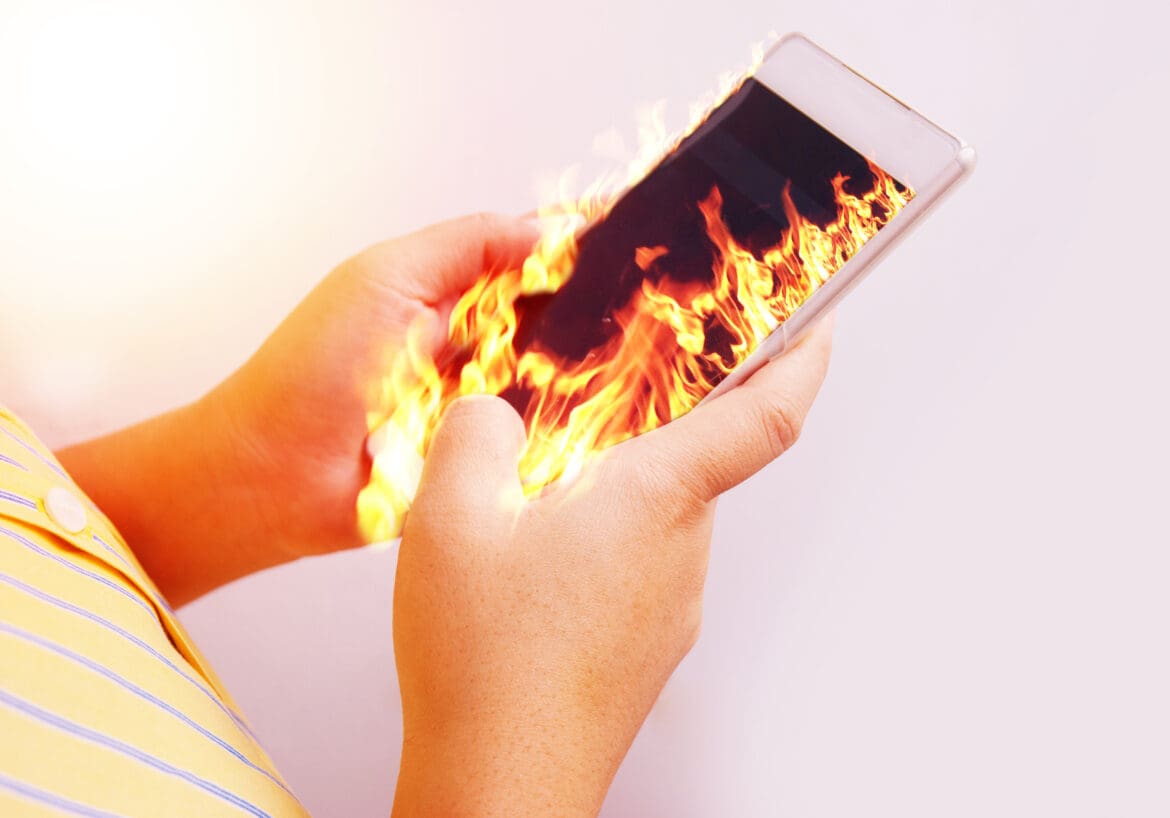Advertiser & Editorial Disclosure: The Bulkhead Seat earns an affiliate commission for anyone approved through the links below. This compensation may impact how and where links appear on this site. We work to provide the best publicly available offers to our readers. We frequently update them, but this site does not include all available offers. Opinions, reviews, analyses & recommendations are the author’s alone, and have not been reviewed, endorsed, or approved by any of these entities.
The Federal Aviation Administration (FAA) tweeted yesterday that charging devices powered with lithium ion batteries to 100% may increase the chance of fire. A fully charged battery offers a greater risk of a thermal runaway, which can cause fires or explosions to occur.
Underwriters Laboratories, Inc. describes thermal runaway as “one of the primary risks related to lithium-ion batteries. It is a phenomenon in which the lithium-ion cell enters an uncontrollable, self-heating state. Thermal runaway can result in ejection of gas, shrapnel and/or particulates (violent cell venting), extremely high temperatures, smoke, [and] fire.
Before getting on an airplane, do you charge your lithium powered devices to 100%? A full charge may increase the chances of a fire. If you won’t be using it on your flight why risk it? Learn to prepare your devices for a safe flight at https://t.co/y5CqWLYtE7. #podcast #PackSafe pic.twitter.com/xzg611Hfw5
— The FAA ✈️ (@FAANews) July 23, 2023
There have been several incidents in past years involving devices catching on fire.
Power bank fire on board China Southern CZ3539, Feb 25 2018.😱😱 pic.twitter.com/cby6E62qRv
— ChinaAviationReview (@ChinaAvReview) February 25, 2018
Most gate agents now announce that passengers should remove lithium ion batteries from bags before checking them and onboard there are announcements to inform passengers about potential risks if batteries get stuck in seats and damaged. Airlines have fire containment bags to handle situations if they arise in the cabin, but batteries can cause a risk if checked into the hold unattended.
I had never heard that fully charged devices pose a greater risk until this FAA tweet. The advice is to keep devices you’re not using charged at 30% or lower to reduce the risk of thermal runaways.
Robert Ochs, Manager of the Fire Safety Branch at the FAA’s William J. Hughes Technical Center, said:
If you know that you are bringing a device that you won’t be using during your trip, it’s actually best to have it at a lower battery level. So, if it’s at 30%, say, or lower, it’s less likely to undergo thermal runaway and the reaction would be less severe. Another thing to do would be to not charge it. So, if you have a device that is off, but you’re still charging it, it could also go into thermal runaway in that situation as well. So, it would be best to just keep it powered off and also not plugged in. We’re not trying to scare people into not, you know, bringing these devices on board or always having them at a 0% battery level for safety. We just want the general flying public to be aware that you know, there is a hazard associated with it.”
Anthony’s Take: Keeping your device charged to 30% or less to reduce risk of fire is new to me, but something to keep in mind while flying.
(H/T: View from the Wing.)
User Generated Content Disclosure: The Bulkhead Seat encourages constructive discussions, comments, and questions. Responses are not provided by or commissioned by any bank advertisers. These responses have not been reviewed, approved, or endorsed by the bank advertiser. It is not the responsibility of the bank advertiser to respond to comments.
Advertiser & Editorial Disclosure: The Bulkhead Seat earns an affiliate commission for anyone approved through the links above This compensation may impact how and where links appear on this site. We work to provide the best publicly available offers to our readers. We frequently update them, but this site does not include all available offers. Opinions, reviews, analyses & recommendations are the author’s alone, and have not been reviewed, endorsed, or approved by any of these entities.
